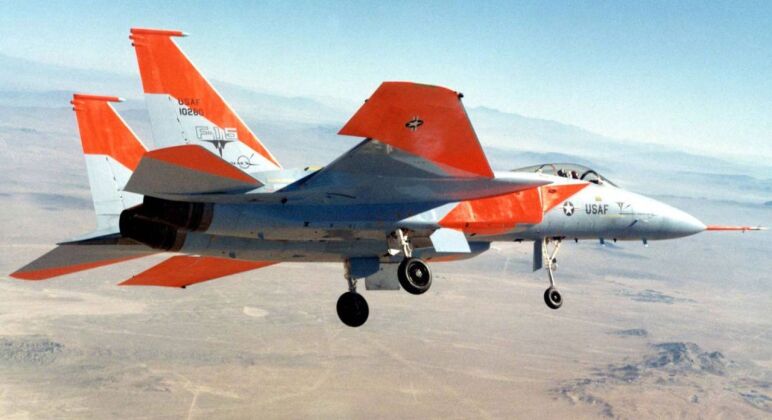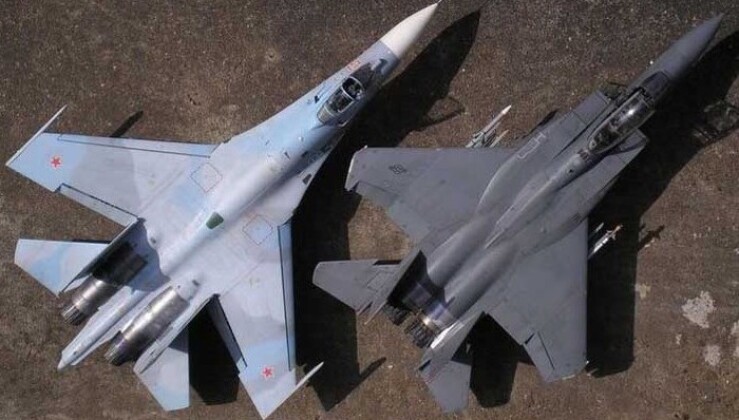News
F-15 Eagle Marks Half a Century Since First Flight: It May Still Be America’s Best Fighter

July 2022 marks 50 years since the F-15 Eagle heavyweight fighter made its first flight, with the aircraft taking off from Edwards Air Force Base in California as what would become the first fourth generation fighter fielded by a Western air force. The fighter was developed as a successor to the F-4D/E Phantom of the Vietnam War era, and saw its specifications change significantly during development in part due to the emerging threat posed by the Soviet MiG-25 Foxbat heavyweight interceptor, which had first flown eight years prior in 1964. The Foxbat was significantly larger and longer ranged than previous aircraft designed for air to air combat, and proved all but invulnerable to attacks by F-4s. The F-15 entered service just three years after its first flight in 1975, and was one of four American fourth generation fighters developed during the Cold War. Although significantly more capable than the lightweight F-16 and F-18 that followed it, the Eagle was considerably smaller and overall less capable than the F-14s developed for the U.S. Navy which boasted far more powerful sensors, triple the air to air engagement range and access to air to air missiles with active radar guidance which the F-15 would not receive until the 1990s. The F-15’s acquisition and operational costs, although unprecedented for an air force fighter, were neverthless far lower than those of the F-14 allowing it to be fielded in significant numbers and see exports to Japan, Israel and Saudi Arabia. The fighter would be exported more widely after the turn of the century when, following a termination of American orders in 2001, foreign orders from South Korea, Singapore, Saudi Arabia and Qatar were relied on exclusively to keep production running.
The F-15 is the oldest fighter still in production anywhere in the world today, closely followed by the F-16 which was manufactured on a larger scale to serve as a lighter and cheaper counterpart. While the F-15 program met its ambitious performance requirements, and operational costs remained far below those of the F-14, they were still too high to make the fighter the mainstay of the U.S. Air Force as the F-4 had been. This resulted in the need for the F-16 which began to join the fleet three years later from 1978. The only heavyweight fighter the F-15 would ever engage was the MiG-25 it was designed to defeat, although despite the F-15 being a generation ahead the MiG managed to defeat it in air to air combat in their final engagement in 1991 when flown by Iraqi pilots. Other than the MiG-25 and F-14, however, the F-15 provided comfortable superiority over all kinds of threats throughout its first five years in service and until the early 1980s, when the Soviet Union began to introduce its own fourth generation combat jets. These included the MiG-25’s much more capable successor the MiG-31, which was the first in the world with a phased array radar and boasted the ability to engage from well above the Armostrong Limit and even to shoot down cruise missiles mid flight, as well as the Su-27 Flanker which was designed specifically to tackle the F-15. The Su-27 was widely considered the most capable fighter fielded by any air force during the Cold War, and during testing against F-15s in the United States after the conflict’s conclusion it proved capable of comfortably surpassing the American Eagle.

Despite significant advances made in fighter programs abroad, and investment from the late 1970s in developing a successor to the Eagle more capable of tackling the Su-27, the F-15 has retained a central role in the U.S. Air Force which resumed orders for the class in 2018. Despite its age, the aircraft would be prioritised for receipt of the latest technologies after the Cold War’s end – being the first in the Air Force to integrate phased array radars and active radar guided missiles from 2000 and 1991 respectively. The fighters have been enhanced considerably since the 1970s, with new variants being far easier to maintain, gaining the ability to supercruise, and having entirely new sensors and avionics. The F-15 is today considered the most capable air superiority fighter in the Western world – a title it never held during the Cold War – due not only to its modernisation but also to the retirement of the F-14 and failure of the F-22 program intended to provide a fifth generation replacement. The F-22 program never moved beyond the basic F-22A airframe, saw 75 percent of production cut, and had orders to terminate manufacturing given less than four years after it entered service. Its tremendous operational costs and wide ranging performance issues imposed further restrictions and ensured that the F-15 it was meant to replace would remain in production for decades longer.

The clearest sign of the F-22 program’s failure was that despite only a fraction of the originally planned airframes having been produced, the Air Force announced in May 2021 plans to retire the relatively new aircraft while continuing to buy new F-15s and while even some Cold War era F-15Cs remained in service. The F-22’s failure ultimately leaves the F-15 as the only Western heavyweight fighter in production, and the lack of upgrades for the F-22 fleet has ensured that newer F-15s enjoy considerable performance advantages particularly pertaining to their avionics, sensors and network centric warfare capabilities. The F-15 is expected to remain in U.S. Air Force service considerably longer than any other Cold War era fighter, or than the F-22. Although its ability to go head to head with enemy fifth generation fighters such as the Chinese J-20 remains questionable, continuous upgrades to the design ensure the Eagle will be able to hold its own against rival fourth generation aircraft such as the J-16 or Russian Su-30. As the only fighter on order by the U.S. Air Force for years, other than the F-35A, deep cuts to F-35 orders in 2022 and an increase in F-15 orders apparently through reallocating funds from the stealth fighter program, has served as only the latest indication of the Pentagon’s favourable view of the Eagle – as well as the very troubled state of the F-35 program.












